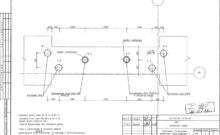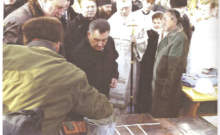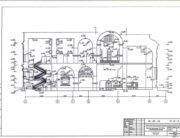At the end of the 18th century, the final formation of the architectural and stylistic appearance of the Assumption Cathedral took place: the first works were done in 1731, the second – in 1759-1789, when the famous ukrainian architect of the late Baroque epoch took part in the construction Stepan Kovnir. The cathedral received a decorative decoration, its facades were decorated with lush stucco ornaments that stretched around the perimeter of windows, doorways, covered the free sections of the walls, apses and gables. So, the most important, “landmark” periods of the construction of the Assumption Cathedral were the first Old Russian period, when the main core of the cathedral and the last, seventh period of the Baroque epoch were formed, when the three-dimensional composition of the Assumption Cathedral and the concept of its decorative decoration radically changed. .
Assumption Cathedral was destroyed during the Second World War on November 3, 1941. The epicenter of the explosion was located between the northern wall of the old Russian part of the temple and the John the Baptist Inner Church. As a result of the explosion, the pylons of the Assumption Cathedral were destroyed, arches and walls collapsed. The most post-Gave St. John the Baptist chapel, least of all – the south-eastern part of the cathedral with St. John theological chapel and the southern apse.
A significant part of the decorative ornaments of the Assumption Cathedral and church utensils were exported to Germany during World War II, and their fate is still unknown, and some of the surviving remnants of building materials and structures were used for construction and other structures.
In contrast to the St. Michael’s Golden-Domed Cathedral, attention has been focused on the ruins of the Assumption Cathedral since 1945. Immediately after the end of the Second World War, the dam was dismantled from the destroyed parts of the temple, which lasted until 1963 inclusive. Disassembly of the rubble was conducted by measuring. detailed photofixation, archaeological excavations and field survey of the monument. By the way, the first need to restore the destroyed Assumption Cathedral sounded already in 1945. She was put forward by the famous: the constructor, the author of the project of reconstructing the Pyatnitskaya church destroyed during World War II in Chernigov, P.D. Baranovsky. True, by that time the idea of restoring the cathedral with simultaneous inclusion of not only the surviving walls, but also the surviving large masonry blocks was an impossible task, since it was impossible to start reproducing the cathedral without completing the dismantling of the dam, as well as accumulating thorough comprehensive scientific information on the features and condition of materials and structures of the structure. In addition, part of the cathedral was preserved, with the John theological chapel in disrepair and demanding immediate emergency measures.



















